Knife Safety: Must-Know Rules for Home Chefs
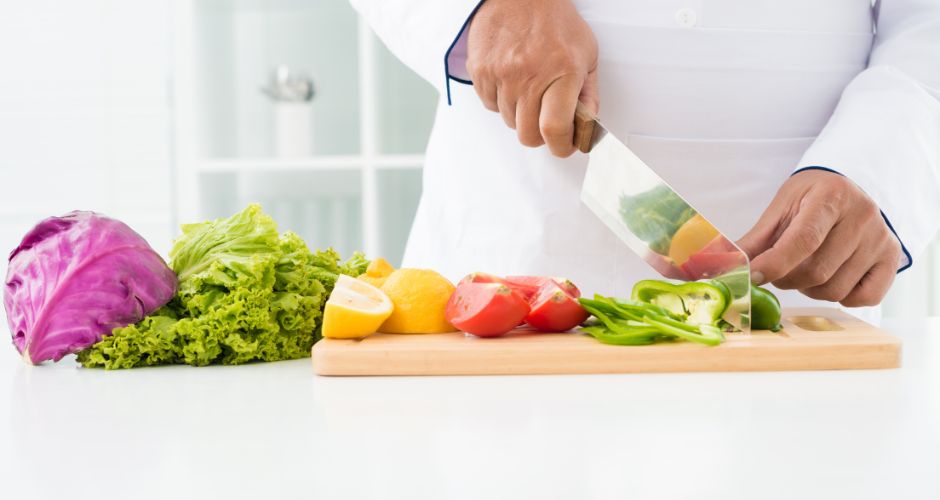
A reliable pair of knives is at the centre of every kitchen, no matter how opulent or basic. These precise tools enable us to transform uncooked material into delectable dishes, making them the unsung heroes of culinary creation. But when it comes to kitchen knives, safety should always come first since with great power also comes great responsibility.
Understanding and putting knife safety into practice are crucial whether you’re an experienced home cook or just starting out in the kitchen. In this thorough course, we’ll delve into the subject of knife safety and examine the guidelines that every home cook has to be aware of. So let’s go out on a trip to improve our knife skills and safety by sharpening our blades and securing our cutting boards.
Choose the Right Knife for the Job
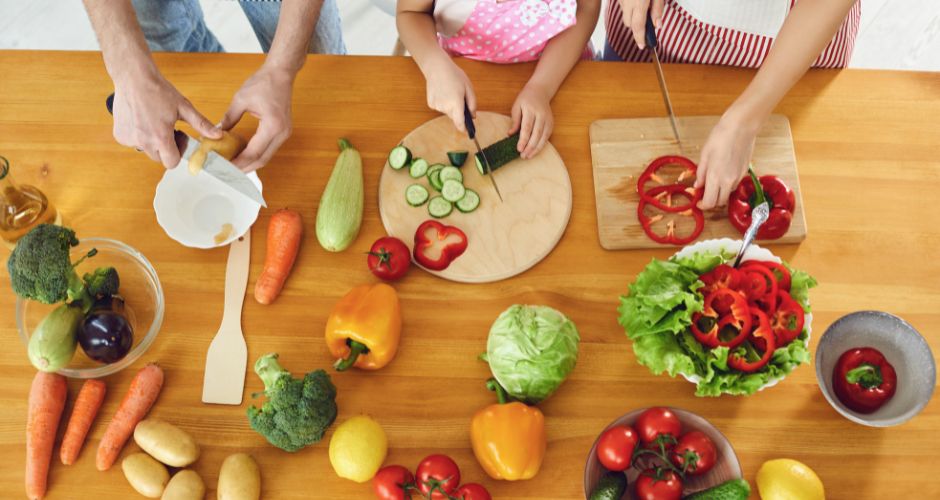
Let’s start with the fundamentals—picking the appropriate knife for the work at hand—before we go into the nuances of knife safety. Knives are made in a range of sizes and shapes, each with a specific function in mind. Following are some popular knife types and their intended applications:
Chef’s Knife
- Perfect for mincing, chopping, dicing, and slicing.
- features a comfortable grip and a broad, sharp blade for multiple uses.
Paring Knife
- Ideal for doing precise operations like trimming, peeling, and slicing small fruits and vegetables.
- has a blade that is sharp and small for detailed work.
Serrated Knife
- Bread, tomatoes, and other delicate goods with hard exteriors and soft inside are among the targets of this design.
- has a serrated edge that grabs and cuts without crushing.
Utility Knife
- a multipurpose knife used for a variety of cutting tasks, frequently acting as a medium-sized alternative to a chef’s knife and a paring knife.
Boning Knife
- used for fish, poultry, and meat deboning.
- usually has a flexible, thin blade for bending around bones.
Cleaver
- primarily employed for cutting through tough vegetables and bones.
- possesses a weighty blade with a wide, rectangular shape.
Always use the proper knife for the task at hand to increase your productivity and safety.
Knife Sharpness Is Safety
All chefs adhere to the principle that a sharp knife is a safe knife. Contrary to popular belief, cutting food with a sharp blade requires less force. On the other hand, a dull knife might easily slip and result in mishaps. How to maintain safe and sharp blades is as follows:
Honing
- Use an honing rod frequently to keep your knife’s edge sharp. Honing realigns the edge, maintaining its straightness and sharpness without actually sharpening the blade.
Sharpening Stone
- Use a sharpening stone occasionally to give your knife a fresh edge. There are many grits of sharpening stones for coarse and fine sharpening.
Professional Sharpening
- If you’re not comfortable sharpening your own knives, think about using a professional sharpening service. The blade can be sharpened again by professionals.
The Art of Holding a Knife
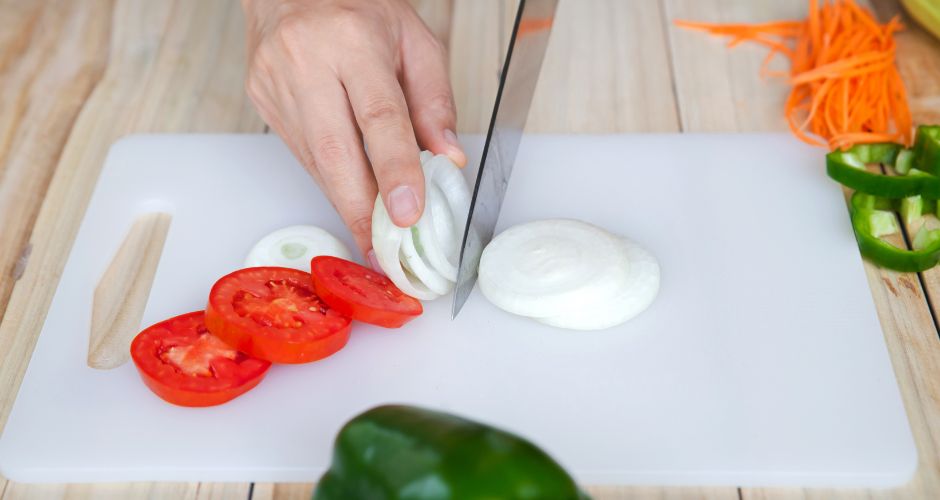
After going over the fundamentals, let’s practice the knife-holding technique. Your control and safety when cutting is substantially impacted by how you hold your knife. We’ll look at two essential grips:
The Pinch Grip
- Use your dominant hand to hold the knife’s handle.
- Just before the bolster (the thick area of the blade where it joins the handle), position your thumb and index finger on the opposing sides of the blade.
- For support, wrap your remaining fingers around the handle.
- The pinch grip is perfect for most cutting applications since it provides excellent control.
The Handle Grip
- With your dominant hand, firmly grasp the handle.
- Wrap your hand around the handle by placing your fingers on one side and your thumb on the other.
- For tasks that call for less control and precision, choose this grip.
- By mastering these grips, you can be sure that while you work, your fingers are safe and out of the way.
The Claw Grip
- Put your hand in the shape of a claw by tucking your fingertips and nails under.
- Place your hand’s knuckles against the side of the food you are chopping.
- The knife should rest against your knuckles as you make precise cuts while using them as a guide.
- Your fingertips are protected by the claw grip because they are kept out of the blade’s path.
Controlled Cutting Motions
You can cut safely and precisely if you use the proper knife, grip, and claw. However, how you move the knife is as important. To practice, try these controlled cutting motions:
Slicing
- Large portions of meat, poultry, or vegetables can be cut through with ease.
- For even slicing, go back and forth smoothly and continuously while maintaining a constant angle.
Dicing
- Useful for making uniformly-sized food pieces.
- The meal should first be sliced into even planks, stacked, and then cut into dice with perpendicular cuts.
Chopping
- Chopping is the best method for breaking up big, uneven chunks of food.
- To cut through the food, gently lift the knife and then slowly bring it down.
Mincing
- Used to produce incredibly fine food bits.
- Keep the knife’s tip firmly planted on the cutting board while rocking it back and forth.
These deliberate movements enhance the presentation of your food while also guaranteeing your safety.
Watch Out for the Rolling Food
While you’re trying to cut some items, like tomatoes and spherical fruits, they have a propensity to roll. Make a solid basis to stop accidents:
Flat Bottom
- Slice a small portion off the bottom of the food to create a flat surface.
- This stabilizes the food and prevents it from rolling while you cut.
Store Your Knives Safely
Proper knife storage is essential for both the safety and the longevity of your knives. Here’s how to store them safely:
Knife Block
- A knife block with individual slots for each knife keeps them separated and secure.
Magnetic Strip
- Magnetic strips mounted on the wall are a space-saving and visually appealing storage solution.
Blade Guards
- Blade guards or sheaths are ideal for protecting your knives when stored in a drawer.
Always store your knives with the blade facing down to prevent accidental cuts when reaching for them.
In Case of a Cut
Despite our best efforts, accidents can still happen. If you do cut yourself, follow these steps:
1. Clean the Wound
- Wash the wound thoroughly with soap and warm water.
- Pat it dry with a clean cloth.
2. Apply an Antiseptic
- Apply an antiseptic solution or ointment to prevent infection.
- Cover the wound with a clean bandage or dressing.
3. Seek Medical Attention
- If the cut is deep, long, or won’t stop bleeding, seek medical attention promptly.
- Tetanus shots may be necessary if the wound is contaminated.
Conclusion: Cutting Safely and Skillfully
As you can see, knife safety is a blend of knowledge, technique, and practice. By choosing the right knife, keeping it sharp, mastering the grips, using controlled cutting motions, and practising safe storage, you’ll become a safer and more skilled home chef.
Remember, knife safety isn’t just about protecting your fingers; it’s also about enhancing your efficiency in the kitchen and creating beautiful, delicious dishes. So, embrace these rules, sharpen your skills, and let your culinary creativity flow while keeping safety at the forefront of your culinary adventures.

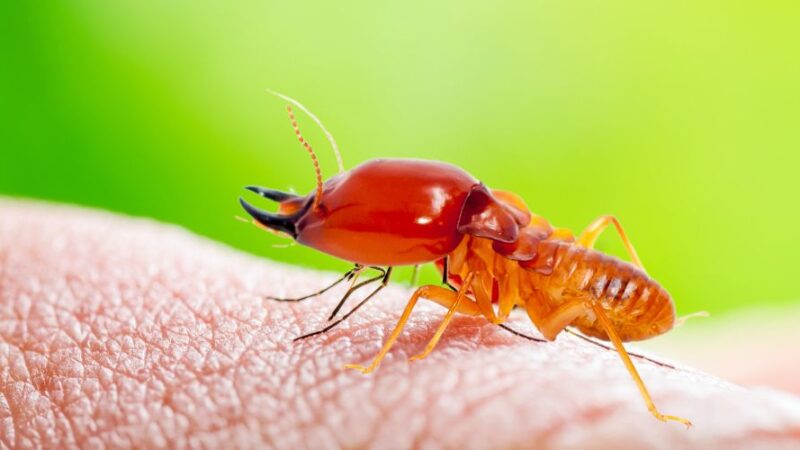
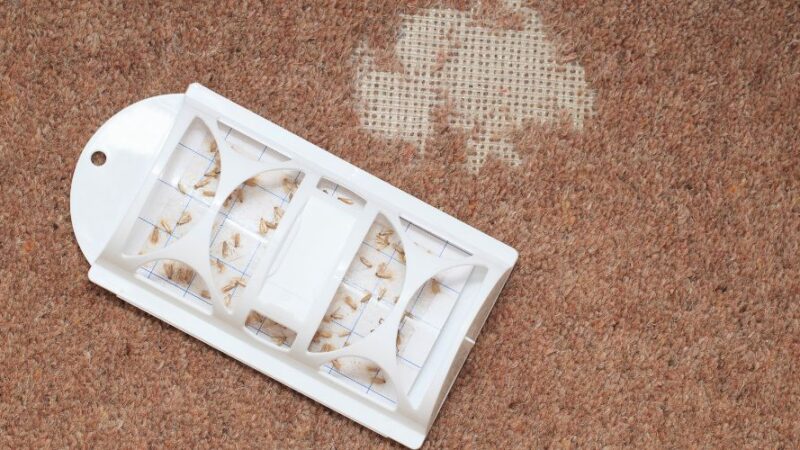



One thought on “Knife Safety: Must-Know Rules for Home Chefs”